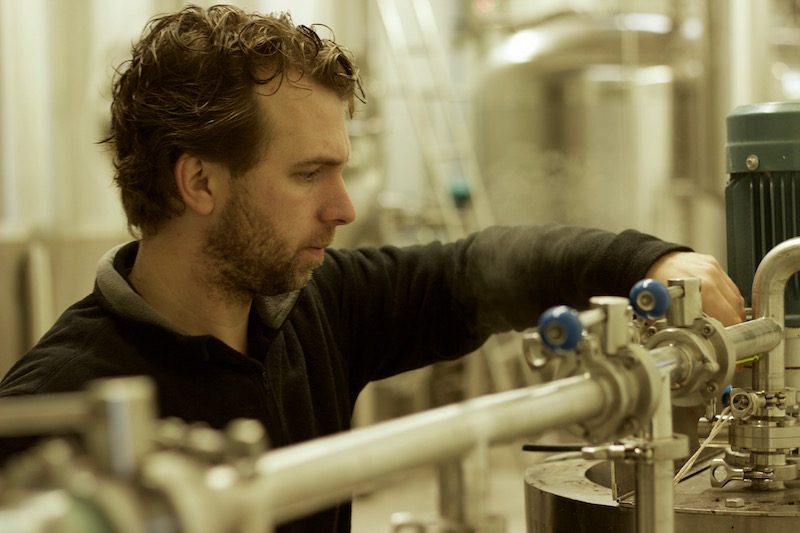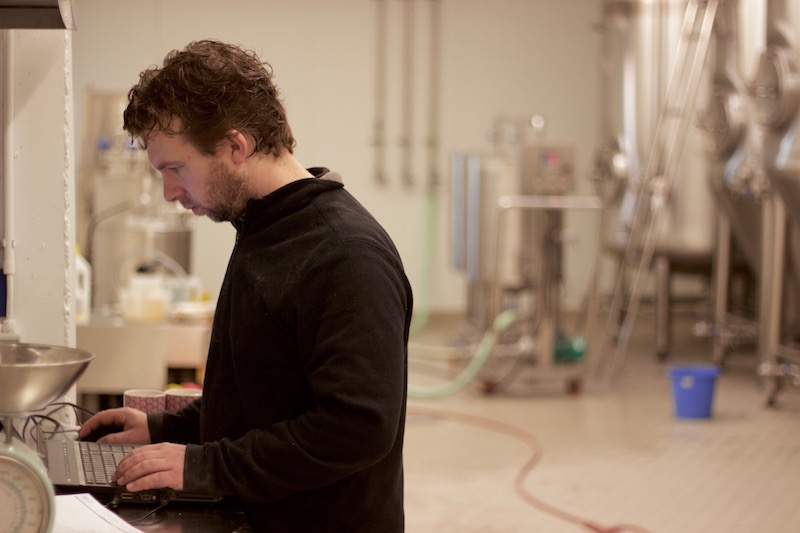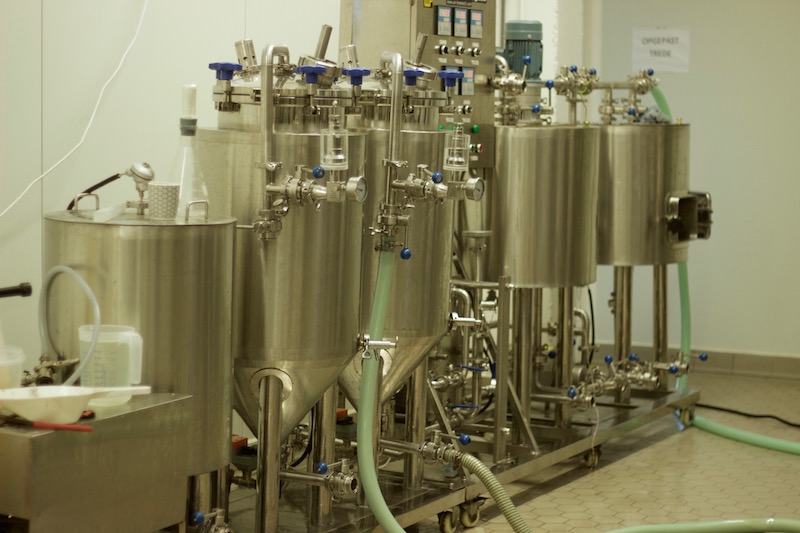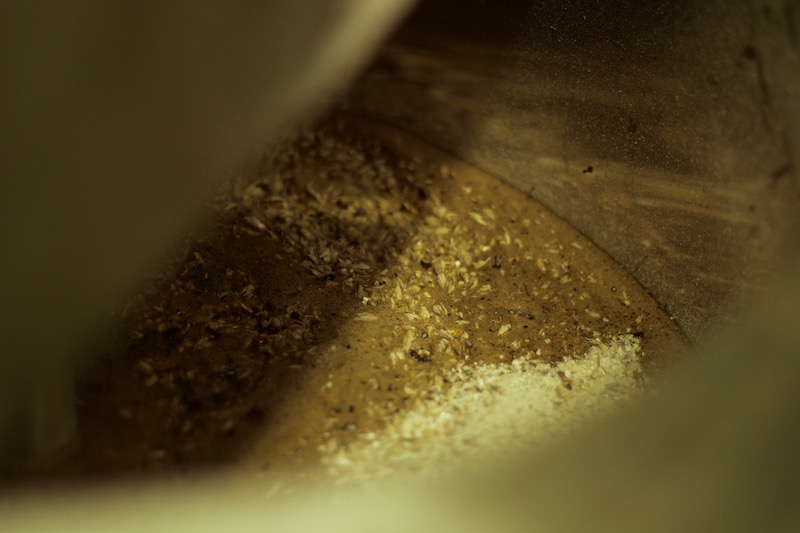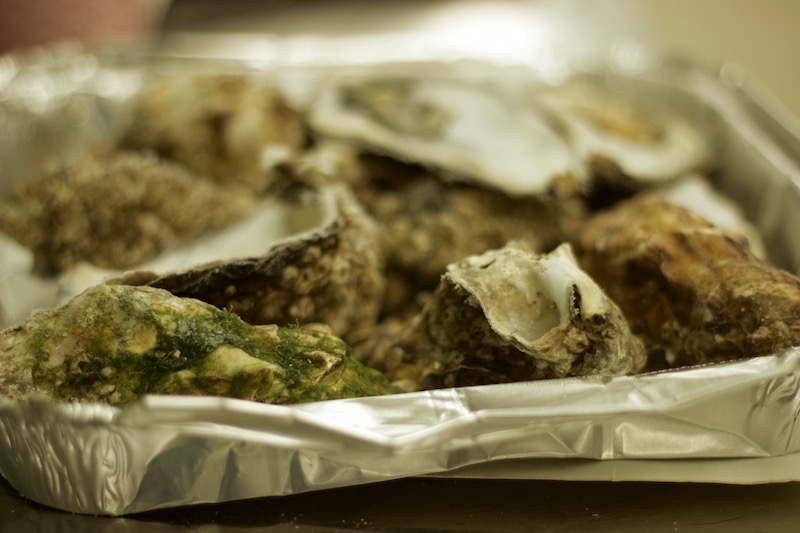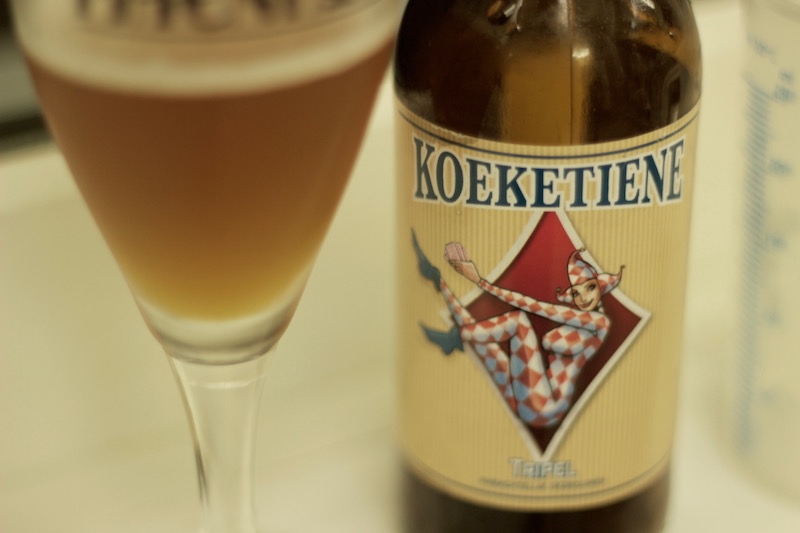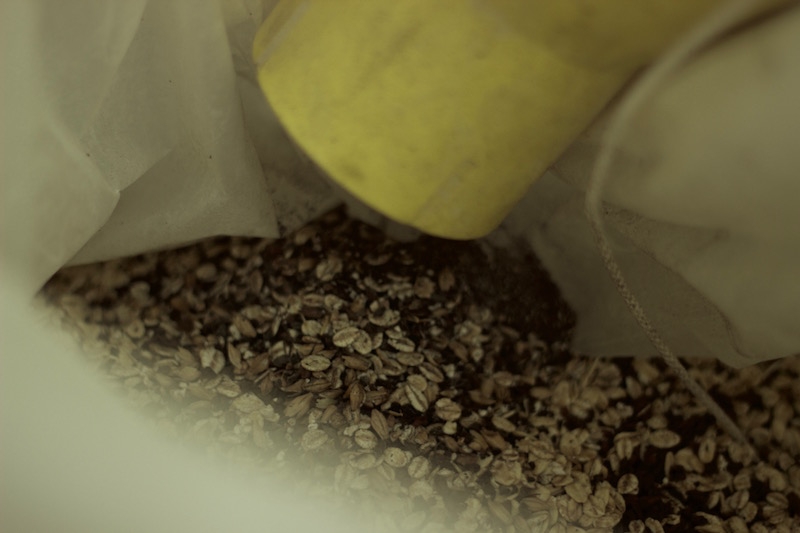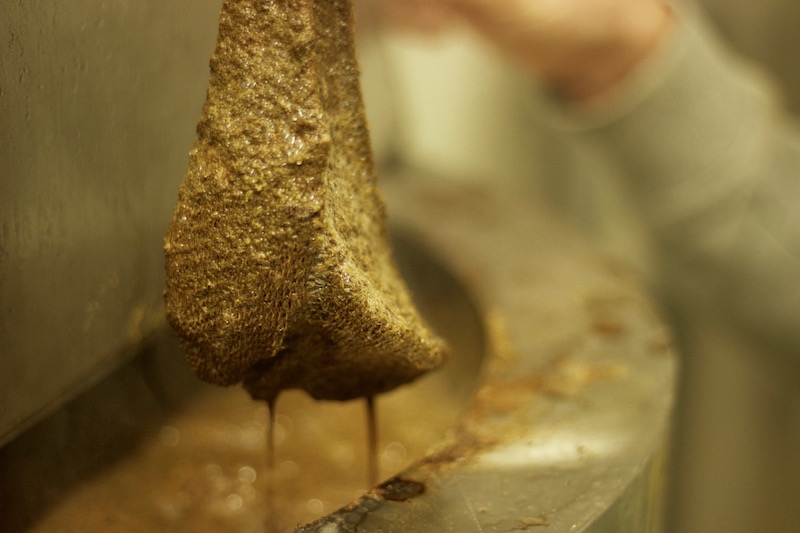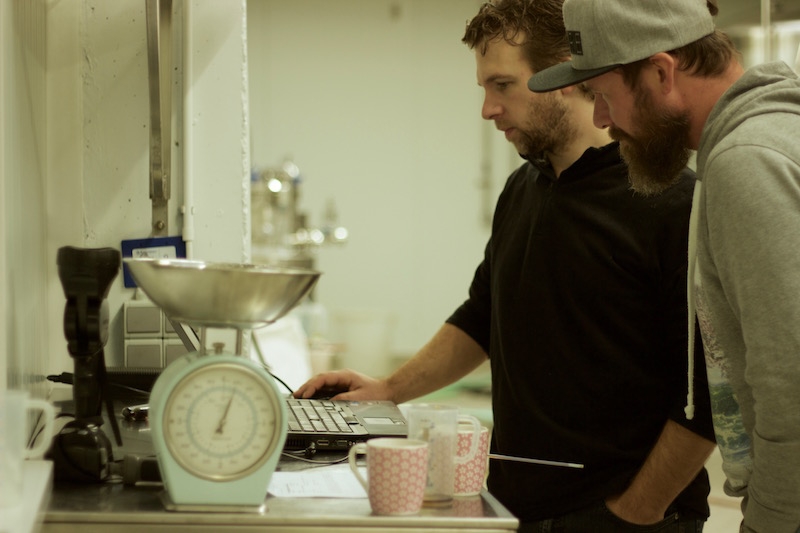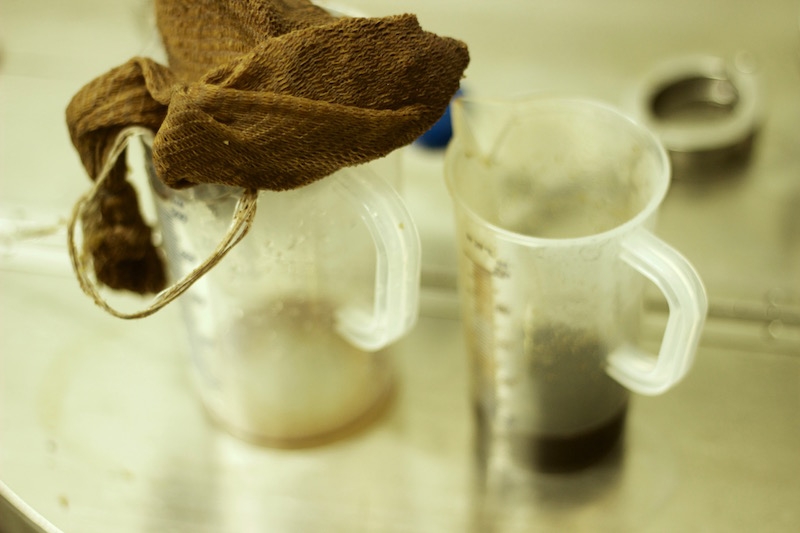There’s a laptop, a pack of playing cards and a bag of oyster shells on the table in front of us. We’ve arrived early to the brewery café of Brouwerij Maenhout where Thijs Maenhout and his wife, Birgit Derammelaere have welcomed us with strong coffee and beer recipe calculations.
We’re brewing an Oyster Stout of 7% ABV today in the West Flemish village of Pittem with Brouwerij Maenhout. It will be poured at an event taking place on Friday 5 February 2016 at Het Huis Van Alijn in Ghent to celebrate the second birthday of Belgian Smaak: #SMAAKDOWN16.
You can buy your tickets here:
BROUWERIJ MAENHOUT
Thijs runs the figures for our preferred grain bill through his brewing software. “The salt flavours from the oysters will lift the perceived sweetness of the stout,” he says. “It’s like when you add salt to caramel or chocolate. If it’s subtle, it can lift the whole taste profile of the beer.”
Thijs hasn’t always been a brewer. Fifteen years ago, he worked in I.T. and had never brewed before.
“I was a computer programmer but I had a bit of a crisis of identity,” he says. “I started brewing in my kitchen at that time but when I made it too dirty, my wife Birgit suggested I move to the shed.”
Thijs began brewing commercially when the Gulden Spoor brewery in nearby Kortrijk upgraded its system in 2008 and their old 500 litre kit went on the market. “Before I bought that installation, I had never brewed with grain,” he says. “I was only using the extract packs. From that time on I was working 4 days a week as a computer programmer and 3 days a week as a brewer.”
Such was the success of the beers he brewed on that kit that he upgraded his own brewery this time last year in December 2014. Along with his brand new 20 hectolitre system, he’s also bought a small 60 litre test kit on which we’re brewing the Oyster Stout today.
OYSTER STOUT
Beers called ‘Stouts’ in Belgium often lack the dry roasted character which sets the beer style apart in other parts of the world. There are, of course, a handful of exceptions, but most seem to let pronounced yeast profiles and unfermentable sugars do the heavy lifting. That seems a real pity.
If there are but few roasty stouts in Belgium, then there are even fewer Oyster Stouts, the Scheldebrouwerij in Meer being a notable exception. That’s also a pity.
Because of all this, we’re brewing a roasty stout today called ‘Such a Pittem’. We make it an Oyster Stout by using oyster shells brought back to Belgium from Carlingford Lough which is near my parents’ home in Ireland. We add them to the wort 10 minutes from the end of the boil.
GOOD DEAL
Brouwerij Maenhout’s first beer was the ‘Koeketiene’, a tripel of 8.5% ABV that avoids the excessively sweet nature of many strong Belgian ales but maintains the classic banana, honey and apricot character. “The Koeketiene was our first beer,” says Thijs. “It’s still our most popular beer.”
The name of the beer refers to the ‘10 of diamonds’ in Manillen, a card game played extensively in Pittem and throughout West Flanders. It’s a trick taking game for 4 players which can be won with bad cards and great memory skills.
“I played a lot of cards,” says Thijs. “It’s how I met my wife. Over a game of cards. The Koeketiene is the ‘10 of diamonds’ hand in Manillen but it’s also a corruption of the French word ‘concubine’, which means ‘mistress’. The beer is actually named after my wife, Birgit.”
SUCH A PITTEM
We’re equipping the beer with its roastiness by using two different types of black malt in equal proportions (Roost 700 and Roost 1400) as well as almost as much (unmalted) roasted barley. Rather than the more traditional pale ale malt, we opt for pils as our base malt and we add sugar before the boil to boost the gravity, knowing that it will ferment out and increase perceived dryness.
We also use both barley flakes and oat flakes in the hope that the beer develops a smooth body and creamy mouthfeel.
We hop with Styrian Goldings at the beginning of a 90 minute boil for bittering, then 15 minutes from the end and again on flame-out for aroma. Visually, it’s very busy, as the bagged oysters and hop pellets bob around in what looks like a thick chocolate mousse. After cooling we pitch with a traditional English ale strain of yeast which we feel will be robust enough to attenuate to desired levels but won’t mask our complex malt bill.
IMPROVEMENTS AND EXPERIMENTS
Thijs keeps extensive records throughout the brew day. “I’m currently developing my own computer programme system for the brewery,” he says. “It is designed to manage inventory, the temperature of the various tanks and a range of other things. If I brew a certain beer, the system takes the malt off the inventory list automatically and tells me when I need to order new ones.”
He talks about small improvements throughout the day. “I’ve got a student working at the brewery,” says Thijs. “She’s on placement from her food programme and she’s carrying out a quality control project for me. We’re developing a set of lab procedures for the brewery.”
But the computer programmes and quality control measures won’t stop the fun. “I’ve got a test brewery kit of 60 litres for this Oyster Stout,” he says. “And the small fermenter in my main system is still 1,000 litres. I plan on testing out a lot of new beers on these in the coming year.”
At the Wintersbierfestival in Vichte which took place at the end of last month, Brouwerij Maenhout poured a pumpkin beer spiced with ginger. Thijs has plans to age his Quad, ‘Ferre’ in rum barrels in the near future. He has played around with hop varieties in his dry-hopped India Pale Ale, Hoppa Hontas.
Both the Ferre and the Hoppa Hontas will be poured alongside ‘Such a Pittem’ at #SMAAKDOWN16. Tickets are on sale now. They are really easy to buy. You don’t need to be a computer programmer to work it out.


